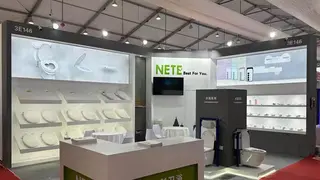First, the vortex siphon is based on the vortex or action of the diagonal edge outlet, and the flushing of the synthetic water triggers the siphon phenomenon in the toilet bidet. The vortex siphon is known for its large water seal surface and quiet operation. Water, by the diagonal border around the outer edge of the press, forms a central role in the toilet bidet, with contents being drawn into the outfall to clean the toilet bidet effectively. Since water is formed forcibly, the splash of water is directed to the exit, accelerating the siphoning effect and completely discharging the dirt.
Second, the siphonic flush is one of the designs that do not have a nozzle to form a siphon. It relies entirely on the rapid flow of water from the seat into the toilet with the return water trap to trigger the siphoning of the sewage. It is characterized by a small water surface with a slightly weaker noise. Just like pouring a bucket of water into the toilet, the water is completely filled with the return bend, causing the siphoning effect. Then the water drains quickly, preventing too much backwater from rising in the Toilet Bidet.
Third, the jet siphon is similar to the basic concept of the design of the siphon backwater bend. However, it is more efficient. The hole sprays a large amount of water and immediately causes siphoning without raising the bucket before discharging the contents of it. In addition to quiet operation, the siphon jet also forms a large water surface. The water enters through the spray holes in front of the seat and backwater bends, completely filling the return bends, and creating a suction effect. So the water drains quickly, preventing too much backwater from rising in the toilet bidet.
Second, the siphonic flush is one of the designs that do not have a nozzle to form a siphon. It relies entirely on the rapid flow of water from the seat into the toilet with the return water trap to trigger the siphoning of the sewage. It is characterized by a small water surface with a slightly weaker noise. Just like pouring a bucket of water into the toilet, the water is completely filled with the return bend, causing the siphoning effect. Then the water drains quickly, preventing too much backwater from rising in the Toilet Bidet.
Third, the jet siphon is similar to the basic concept of the design of the siphon backwater bend. However, it is more efficient. The hole sprays a large amount of water and immediately causes siphoning without raising the bucket before discharging the contents of it. In addition to quiet operation, the siphon jet also forms a large water surface. The water enters through the spray holes in front of the seat and backwater bends, completely filling the return bends, and creating a suction effect. So the water drains quickly, preventing too much backwater from rising in the toilet bidet.
Previous: Something about the Toilet Bidet
Next: Why Is the Smart Toilet Seat Popular?





